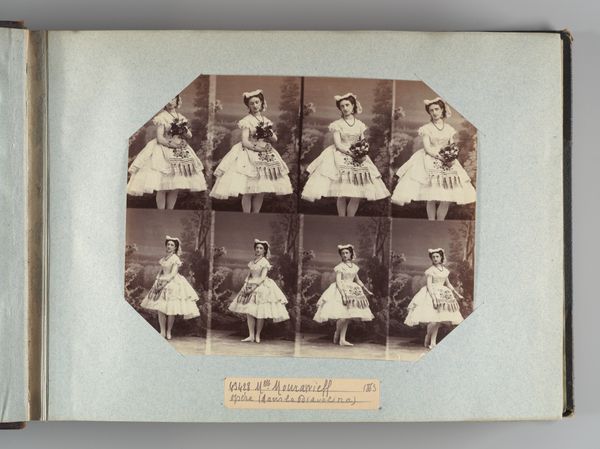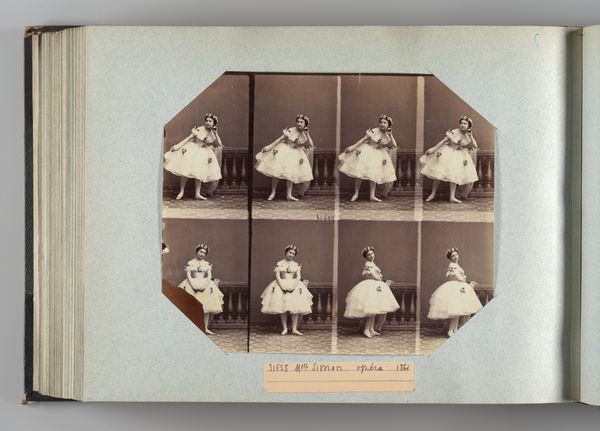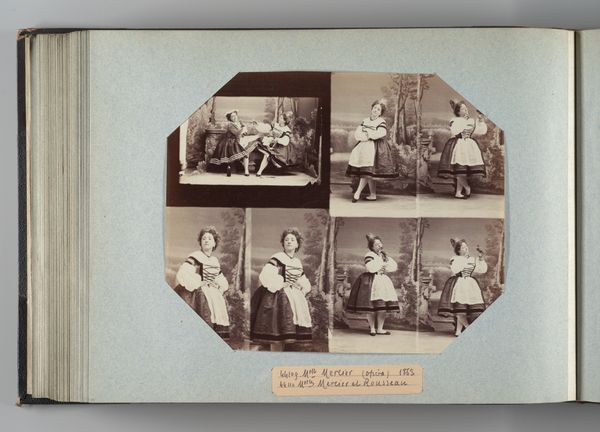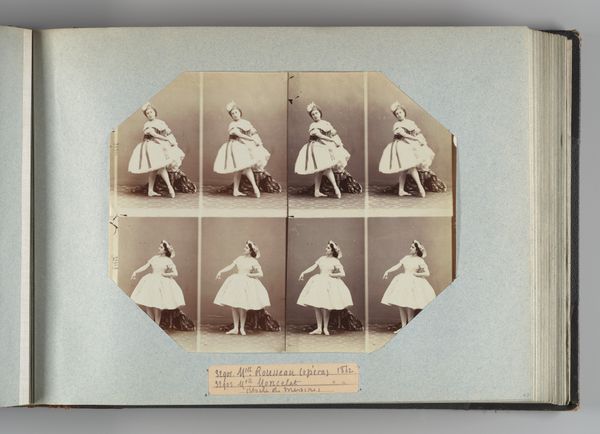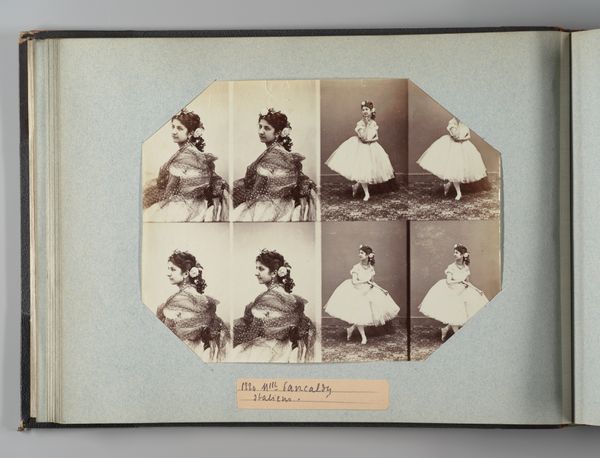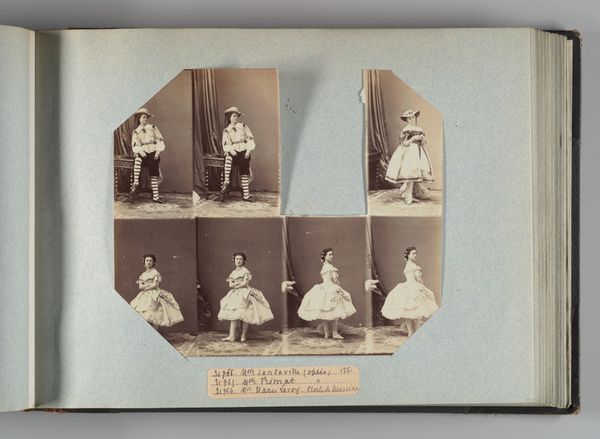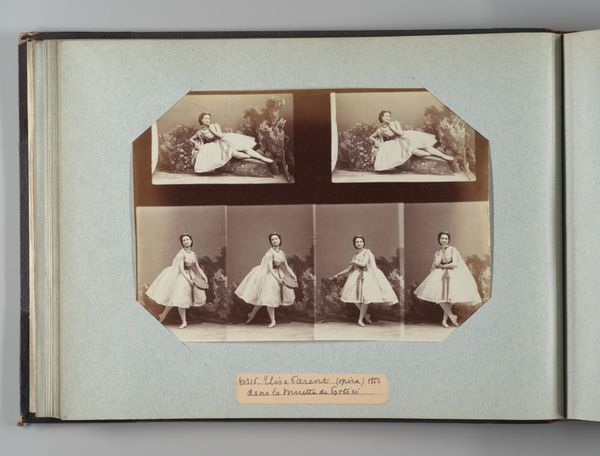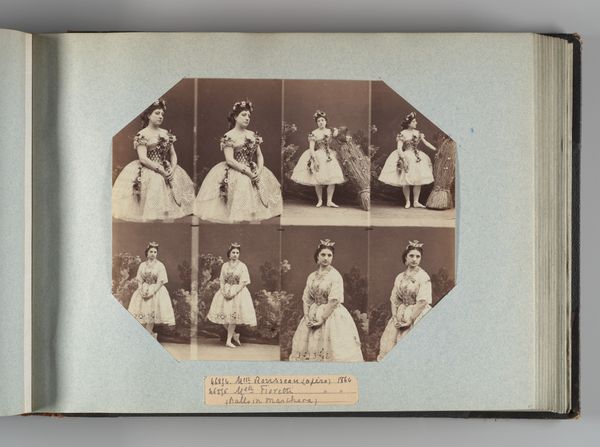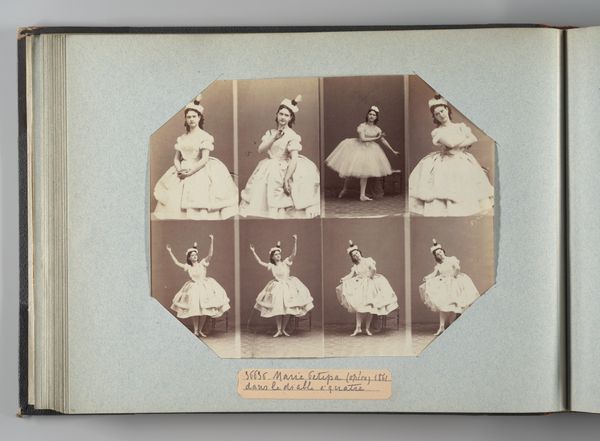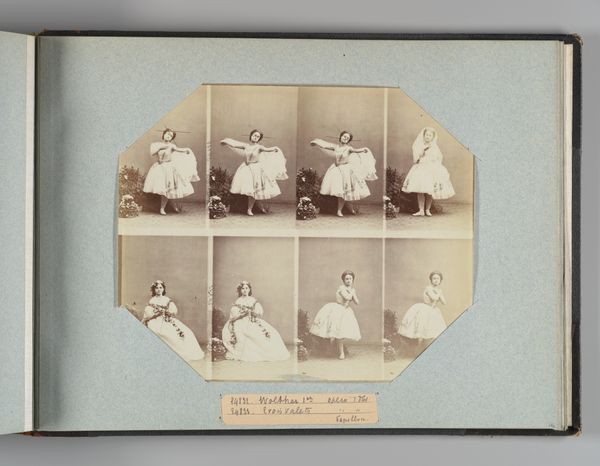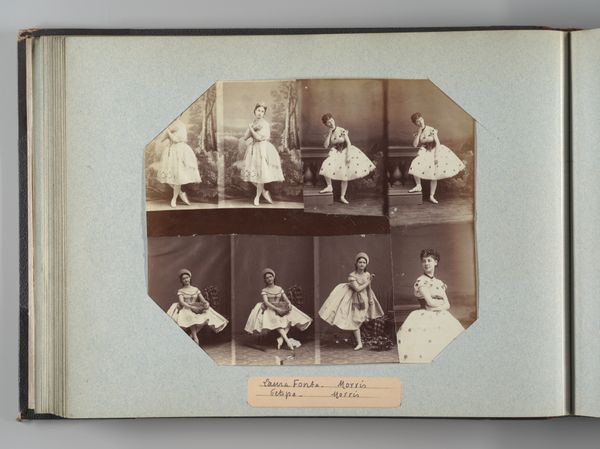
photography
#
portrait
#
photography
#
history-painting
Dimensions: Image: 7 3/8 × 9 1/4 in. (18.8 × 23.5 cm) Album page: 10 3/8 × 13 3/4 in. (26.3 × 35 cm)
Copyright: Public Domain
Editor: Here we have Andrè-Adolphe-Eugène Disdéri's "Mlle Mourawieff dans Gisèle," a photograph from 1863. The subject appears multiple times, in a grid arrangement. I find the tonal range quite limited. What elements do you notice? Curator: My attention is drawn immediately to the composition itself. Note how Disdéri arranges the individual cartes-de-visite within the larger frame, creating a kind of proto-cinematic effect. The repetition compels us to examine the subtle variations in Mlle Mourawieff's poses. Do you observe how the eye travels across the images? Editor: I do see how the poses are all subtly different! Is that on purpose, maybe like a study of movement? Curator: Precisely. Observe how the limited tonal range enhances our appreciation of line and form. Disdéri masterfully utilizes the shallow depth of field, directing our gaze to the delicate articulation of the dancer's tutu and the refined elegance of her gestures. Semiotically, the tutu becomes more than mere costume, symbolizing weightlessness and ephemeral beauty. The structural repetition almost underscores these things in different lights, wouldn't you agree? Editor: That makes sense. So you're less concerned with *who* she is and more about *how* Disdéri captured her likeness in a structured, almost scientific way. I would be interested to research why these photos look nearly identical despite them capturing what seems to be, motion. Curator: Indeed. My focus rests on deciphering the artistic language Disdéri employs. This image prompts us to consider the formal qualities of early photography and its fascinating dialogue between documentation and aesthetic intention.
Comments
No comments
Be the first to comment and join the conversation on the ultimate creative platform.
